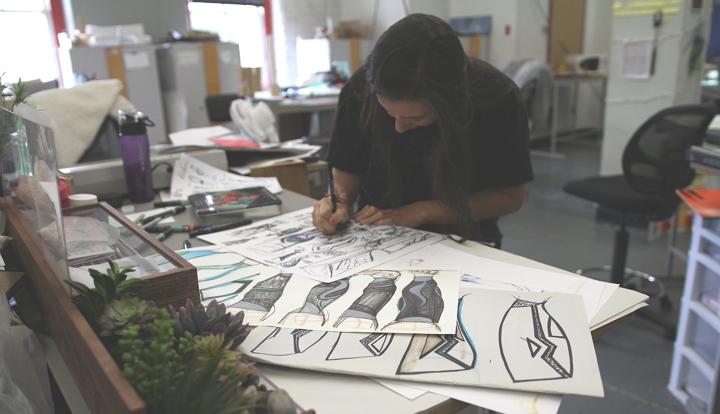A group of 27 second-year students at Kansas State University’s Interior Architecture and Product Design Studio are heavily involved in a project to design 3D printed prosthetic “skins” which will ultimately be fitted over the existing prostheses used by six students at the school.
Dustin Headley, an associate professor and leader of the IAPD studio project, says the skins will be connected to an existing prosthetic limb, and they’ll be 3D printed in a flexible resin.
While existing skin prosthesis may cost around $1,000 each, the students are hoping to produce all six for that price.
“It really is an immersive experience where the students are not only being educated on some technical issues involved in making 3D printing and digital modeling, but also the result of that is not just an academic exercise,” Headley told The Collegian. “But it is something that is actually given and is manufactured and we give it to the participants.”
According to sophomore Hana Robinson, it was key to understand how each skin would work for each participant before taking on the challenge of creating them.
“We only talked to (the participants) once or twice before designing the skin, and since we really want to tailor the skins to the type of person, it is difficult to get the whole picture of who the person is in that amount of time,” Robinson said.
Bryce Boyer
Bryce Boyer, a wrestling club member at the university and a senior in mechanical engineering, is among those slated to receive the skin products.
“I am really looking for two things,” Boyer said. “I really want something that looks cool, but I also would like it to fill out a pant leg so I can look more professional in job settings.”
Boyer’s not one to let his challenges get in his way. A former high school wrestler and marching band member, Boyer also studies jiu-jitsu and has climbed Machu Picchu.
“When the kids will stare at me, I want to give them something nice to look at,” Boyer says.
Robinson says yet another difficulty the design students faced was an abbreviated (two-week) time frame to complete the designs and fabrication, and she added that working on this project has led her to believe that her design skills are up to the task of creating a product which might help her swim coach’s son, a muscular dystrophy sufferer, swim like his dad. She might find inspiration in another project, a high-tech swimming leg called the Elle.
“This has a lot of implications, in terms of working with wounded warriors and veterans that are coming [home], or really just anyone,” Headley said.
Do you know of any projects where 3D printing is being used to add quality of life for people with special physical requirements? Let us know in the Prosthetic Leg Skin forum thread on 3DPB.com.
